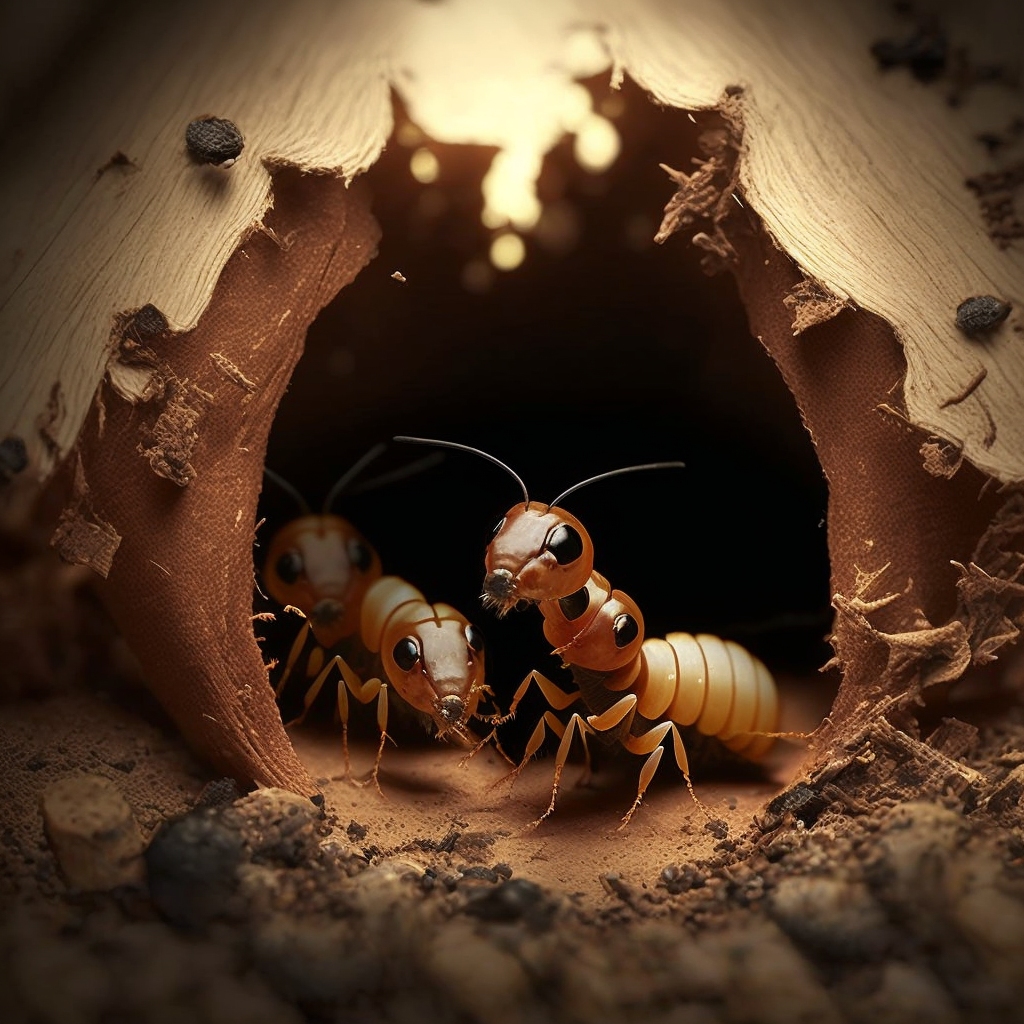Early Stage Signs of Termites in Ceilings
Every year, termites damage U.S. homes to the tune of billions of dollars. Homeowners should be aware of the signs of termites that could mean they have an infestation.
But what do you do if you find signs that termites have damaged your home?
Termite Damage in Ceilings
Termites in the ceiling can damage your roof just like they can damage any other wooden part of your home.
Both subterranean and Drywood termites can damage your roof because they live in your ceiling.
They like to live around fireplaces where there may have been leaks and over bathrooms where there may be too much moisture under the insulation.
What does Termite Damage Look like in Ceilings?

Even though you should have a trained professional check for and treat any possible termite infestations in your home’s ceiling, you can look for these signs of damage from termites:
- Bubbles and stains on your ceilings that look like water damage
- Any places where your ceilings buckle or sag
- Cracks in your ceilings caused by termites in the support beams.
- Mud tubes that go up to your ceilings.
- “Drop tubes” coming out of ceilings, in which a small tube about 3 to 4 inches long comes straight out of the ceiling in the middle of the room.

What do Termite Droppings Look Like?

The small pellets that termites leave behind are called frass. They are about the size of a grain of rice.
Most of the time, they are dark brown or black. Termite droppings can be found in large numbers near termite nests or places where they eat.
Termite damage can be hard to spot, so it’s important to know the signs of termite damage.
Ant Droppings vs Termite Droppings
It can be hard to tell the difference between the droppings of termites and those of ants. Both of them are small and dark. But there are a few important differences.
Termite droppings tend to be the same size, but ant droppings can be different sizes. Termites also tend to leave behind small piles of sawdust near their nests, while ants do not.
A colony of termites can have millions of termites, but a colony of ants usually only has a few thousand ants. Ants don’t eat wood, but termites do.
Damage caused by ants is usually not as bad or expensive as damage caused by termites.
If you don’t know if the droppings you see are from termites or ants, it’s best to call a professional pest control company for help.
In the end, droppings from termites on the ceiling are a big problem.
Termite Damage Prevention

Taking steps to prevent termites is the best way to avoid having to pay for expensive treatments and repairs.
You can help protect your ceiling, drywall, and the rest of your home from termite damage by taking the following steps:
Paint, stain, seal, or treat any exposed wood on the outside of your home.
Fix any roof leaks or other damage to your shingles, fascia boards, or eaves right away.
Taking steps to prevent termites is the best way to avoid having to pay for expensive treatments and repairs.
You can help protect your ceiling, drywall, and the rest of your home from termite damage by taking the following steps:
Paint, stain, seal, or treat any exposed wood on the outside of your home.
- Fix any roof leaks or other damage to your shingles, fascia boards, or eaves right away
- Get any plumbing leaks under your house fixed as soon as possible. Don’t let water build up under your house.
- Keep your gutters clean so that water can flow through them well.
- Make sure that all of the vents in your home’s attic and basement are properly screened.
- Don’t let wood scraps pile up near your house.
- Cut back any plants, like shrubs, that are near your house.
- Do not let plants get so big that they trap water around your foundation or block vents in the foundation.
- Cut back any tree branches that are touching your roof or wooden structures like window frames or eaves.
- Don’t put mulch near your house, especially if it has wood siding.
Take any of the above warning signs seriously, and if you find termite damage to your ceiling, don’t wait to call a trained pest control professional or agency to get an expert opinion.




